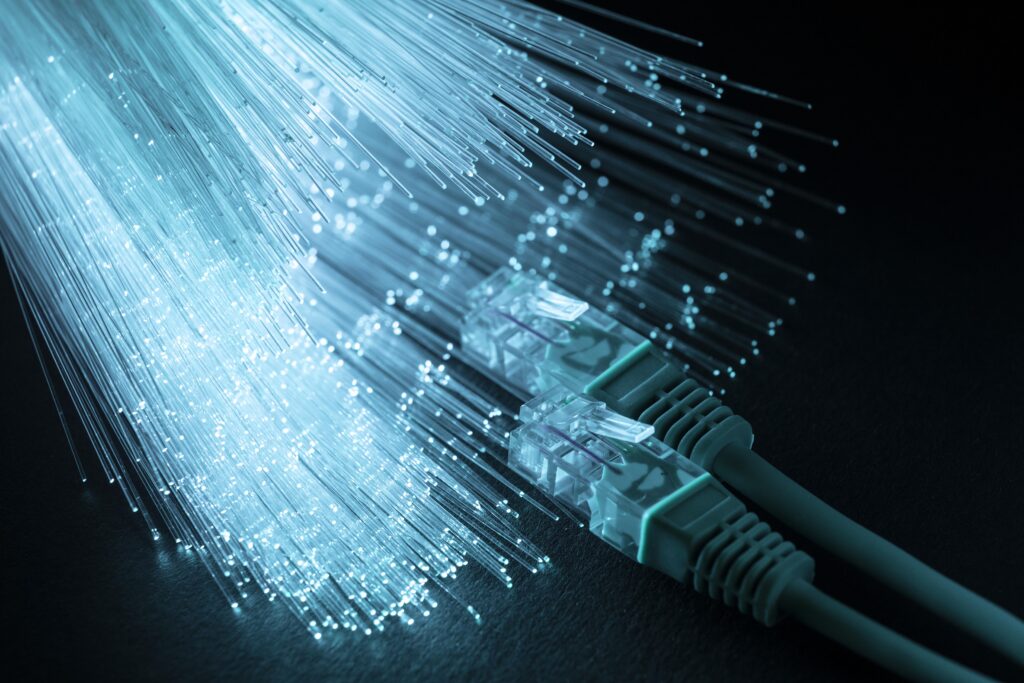May 23 2024
/

Understanding Fiber Color Codes: A Simple Guide
In the realm of telecommunications and networking, fiber optic cables are indispensable. These cables form the backbone of modern communication systems, enabling high-speed data transmission across extensive distances. But what ensures their seamless operation? One critical factor is the fiber color code.
This guide will introduce you to the fundamentals of fiber color codes, explain their significance, and demonstrate how to identify them effortlessly.
What is Fiber Color Code?
A fiber color code is a standardized system designed to distinguish individual fibers within a fiber optic cable. Each fiber strand is assigned a distinct color to eliminate confusion during installation, maintenance, and repair. This system allows technicians and engineers to quickly and accurately identify and manage each fiber, minimizing the risk of errors.
Why is Fiber Color Code Important?
- Accuracy: Proper identification of fibers helps maintain the integrity of the network by reducing errors during installation and repairs.
- Efficiency: Technicians can work more efficiently by quickly identifying the fibers they need to work on.
- Safety: Correctly identifying fibers prevents accidental damage to the network, ensuring continuous service.
Standard Fiber Color Code
The most commonly used fiber color code system is the TIA/EIA-598, which is widely adopted in North America. Here’s a breakdown of the standard color code for a 12-fiber cable:
- Blue
- Orange
- Green
- Brown
- Slate (Gray)
- White
- Red
- Black
- Yellow
- Violet
- Rose (Pink)
- Aqua
Identifying Fiber Color Code
Understanding the fiber color code is straightforward once you get the hang of it. Here are some tips to help you identify the fibers correctly:
- Memorize the Sequence: The first step is to memorize the standard sequence of colors. This will make it easier to identify fibers quickly.
- Use a Reference Chart: Keep a reference chart handy, especially if you’re new to working with fiber optics. This can be a physical chart or a digital one on your device.
- Practice: The more you work with fiber optics, the more familiar you will become with the color codes.
Color Code for Larger Fiber Cables
For cables with more than 12 fibers, the color code system repeats itself. For example, in a 24-fiber cable, the first 12 fibers follow the standard color code, and the next 12 fibers repeat the same sequence but may have added markings to differentiate them.
Real-World Applications
Fiber color coding is not just a theoretical concept; it has practical applications in various fields:
- Telecommunications: Ensures clear and efficient communication by preventing mix-ups in the fiber connections.
- Data Centers: Helps in managing large volumes of data by organizing fibers systematically.
- Broadcasting: Provides reliable and high-quality signal transmission for live broadcasts.
Common Challenges and Solutions
While fiber color codes make life easier for technicians, there can still be some challenges:
- Fading Colors: Over time, the colors on the fibers can fade. Using a reference chart and proper lighting can help mitigate this issue.
- Mixed Standards: In some regions or older systems, different color coding standards might be used. Always verify the standard being used before starting work.
- Limited Visibility: In cramped or poorly lit spaces, identifying fibers can be difficult. Using proper tools and lighting is essential.
Conclusion
Mastering fiber color codes is essential for anyone handling fiber optic cables. It ensures accuracy, efficiency, and safety in all operations. By understanding the standard color codes and adhering to best practices, you can significantly enhance the reliability and performance of your work. Whether you’re an experienced technician or a beginner, keep this guide handy to navigate the world of fiber optics with ease.
Frequently Asked Questions
Q1: What is the standard color code for fiber optic cables?
The standard color code for fiber optic cables typically follows TIA (Telecommunications Industry Association) sequences, including colors like blue, orange, green, brown, slate, white, red, black, yellow, violet, rose, and aqua.
Q2: How can I identify fiber optic cables in poorly lit environments?
Use proper lighting and tools like fiber identifiers or illuminated magnifiers. Referring to the color code chart regularly also helps.
Q3: What should I do if the fiber color has faded, making it hard to identify?
Work under good lighting and use a color reference chart. In critical situations, use a fiber identifier tool to trace signals.
Q4: What precautions should I take when handling fiber optic cables?
Handle fiber optic cables carefully to avoid damage. Use proper tools, maintain a clean workspace, and wear safety glasses to protect your eyes from fiber shards.
Q5: How does fiber color coding help in telecommunications and data centers?
Fiber color coding organizes fibers systematically, prevents mix-ups, and ensures clear connections, which is crucial for efficient communication and data management.
